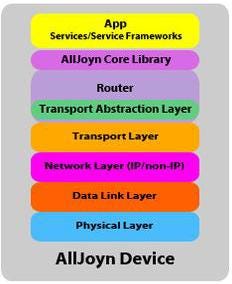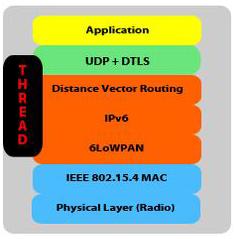Who Will Come Out on Top of the IoT Protocol Wars?
August 16, 2015

Trying to make the call on which consortium’s IoT methods will be adopted by the masses is like choosing sides in a pickup basketball game. Will that big guy you picked be able to carry your team to a win? Or will the combined efforts of the smaller opposing team members make the difference between winning and losing?
In today’s IoT environment, enabling a device to participate in the Internet is just a small part of the design equation. Groups wishing to fundamentally control the touch and feel of the IoT want to give every “thing” the ability to discover and communicate with every other “thing.” And when it comes to the home, where device-to-device discovery and communications have become a priority, web space does not necessarily include the Internet.
There are already some relatively mature IoT protocols in place, such as Constrained Application Protocol (CoAP) and Message Queueing Telemetry Transport (MQTT), that are intended to help standardize device-to-device communication. Both of these tools have been applied to many successful IoT implementations, but there's still a fundamental problem: Everybody wants to rule the world.
Although each IoT-enabler organization wants to reach the same goal of seamless interoperability among “things,” each camp has a different idea for how to get there.
IoTivity
Intel’s Open Interconnect Consortium’s (OIC) path to IoT utopia is paved with IoTivity. IoTivity is middleware that sits between the physical radio hardware and the application (see Figure 1). IoTivity’ s mission is to relate a device’s resources and capabilities to other devices in the application domain with no regard as to how any device in the domain physically transports its data. I don’t think I want my refrigerator telling the irrigation controller when to water the garden, but if the fridge has an interest in the condition of the garden, that’s the whole idea.

AllJoyn
The AllJoyn group, which is backed by the Allseen Alliance, is based on messages passed between apps and firmware-based routers. In the AllJoyn scheme, app-to-app messaging is accomplished through routers. This ability to allow direct app-to-app communications eliminates the “middleman” and precludes the need for intermediary servers. Figure 2 enforces the AllJoyn app/router concept, as you can easily see the AllJoyn App/Router middleware inserted neatly between the application and workhorse OSI networking layers.

MORE FROM DESIGN NEWS: Battle Scenes from the IoT Standards War
Thread
ZigBee built its empire upon the IEEE 802.15.4 rock. But there’s another group of folks offering a new way to mesh network on that same rock. The Thread Group has come up with an IoT networking system it aptly calls Thread. Thread is primarily based on IEEE and IETF standards; a look at the Thread stack, which is depicted in Figure 3, immediately verifies this. Thread’s claim to fame is that it can be retrofitted to existing IEEE 802.15.4-based devices. The Thread crowd also claims that protocol is the result of improving existing mesh networking methods.

Cast Your Lot
So who's supporting these different groups? AllJoyn team members include Qualcomm and Microsoft, while Intel and Samsung represent the OIC. Thread has NEST and Silicon Labs. All of these supporting companies are big players. However, if you take a look at each of the consortiums’ member list, you will find that other well-known vendors such as Atmel, Philips, and Cisco are also playing from the bench. You will also find that some vendors are playing both sides. For instance, GreenPeak, an IEEE 802.15.4 and ZigBee silicon supplier, recently announced a new radio IC, the GP 712, which listens simultaneously for ZigBee and Thread traffic.
MORE FROM DESIGN NEWS: When Will the Smart Home Really Be Smart?
The Thread Group recently announced the availability of the Thread Wireless Networking Protocol, and Microsoft is currently distributing free upgrades to Windows 10. With this explosion of competitive activity, I expect the IoTivity camp to suck it up and deliver on version 1.0 very quickly. GreenPeak chose to “future-proof” its GP 712 silicon by supporting both ZigBee and Thread. It remains to be seen if futureproofing will spill over to the middleware war.
So will ZigBee be relegated to reading utility meters in the backyard while Thread brews coffee and orders groceries? Will the mass distribution of Windows 10 help AllJoyn get a leg up in the smart home segment? Can Samsung’s popular consumer product line make IoTivity shine? All I can say to these prognostications is cast your lots.
Do you have a preferred IoT protocol? Share your thoughts in the comments!

We’re heading to Philly! Design & Manufacturing Philadelphia will take place Oct. 7-8. Get up close with the latest design and manufacturing technologies, meet qualified suppliers for your applications, and expand your network. Learn from experts at educational conferences and specialty events. Register today and join us at Philadelphia’s premier industry showcase!
Fred Eady is the owner of EDTP Electronics, which was established in 1988 following the publication of his first magazine article. Since the formation of EDTP Electronics, Fred has written thousands of magazine articles. He has written for all of the major electronic magazines, including Radio Electronics, Electronics Now, Nuts and Volts, Servo, MicroComputer Journal, and Circuit Cellar. To date, he has authored four books and contributed to a fifth. He currently works as a PIC microcontroller consultant and is a Microchip Authorized Design Partner. Fred also authors monthly columns in Nuts and Volts and Servo magazines. His customers include machine shops, specialty startup companies, medical machine manufacturers, coin-operated device businesses, and various other research and development companies. He has a very close working relationship with Microchip Technology, the manufacturer of PIC microcontrollers, and has taught Ethernet and WiFi classes at Microchip's annual Masters Conference.
[main image via FreeDigitalPhotos.net]
About the Author(s)
You May Also Like





